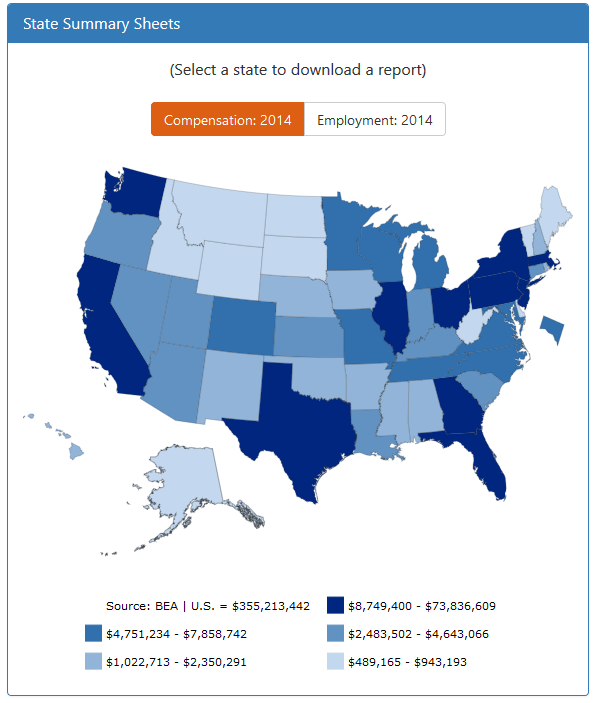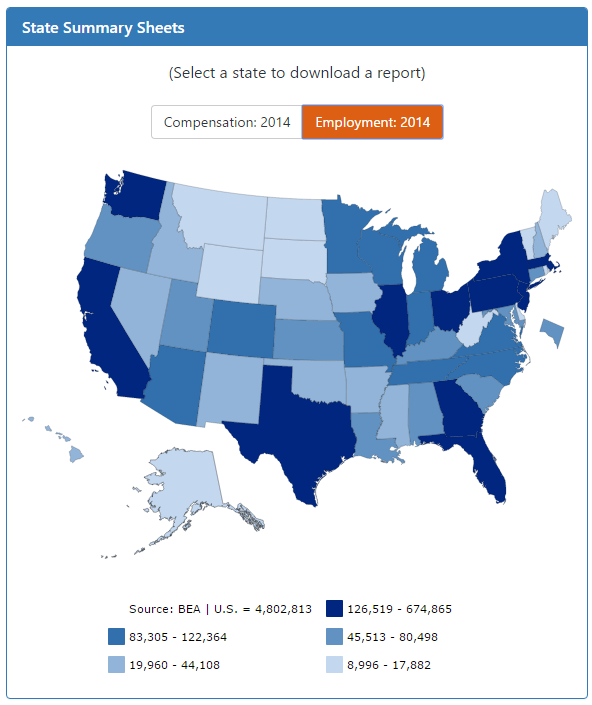Art World
Want to Work in the Arts? Here’s Where You Should Live
The National Endowment for the Arts has some guidelines.

The National Endowment for the Arts has some guidelines.

Brian Boucher

Want to know where you are most likely to get a job in culture—and be paid well for it? A new report released yesterday by the National Endowment for the Arts and the US Department of Commerce’s Bureau of Economic Analysis can help. The report, “The Arts and Economic Growth,” breaks down cultural employment and compensation by state for the first time. (The report is based on data from 2014, the most recent available.)
Some 40 percent of US workers in the arts and cultural fields find themselves in five states: California, New York, Texas, Florida, and Illinois. Unsurprisingly, New York scores high thanks to its museums, performing arts companies, and architecture and design firms, while California rates well due to the concentration of the motion picture industry.
Combined, these states employ a total of 1.9 million cultural workers that bring home $167 billion in compensation. Here is the breakdown:
 Meanwhile, aspiring arts workers may want to think twice before moving to Rhode Island, West Virginia, and Kansas. These states experienced the largest declines in arts and cultural employment between 2008 and 2014, according to the report.
Meanwhile, aspiring arts workers may want to think twice before moving to Rhode Island, West Virginia, and Kansas. These states experienced the largest declines in arts and cultural employment between 2008 and 2014, according to the report.
Surprisingly, Wyoming makes a strong showing based on the substantial “arts-related government industry” there, which includes state parks. And California is not the only state that offers motion picture jobs: Louisiana ranks well in that industry relative to other states. (You can check how your state stacks up on the report’s interactive dashboard.)
 The data is all sourced from the Arts and Cultural Production Satellite Account, or ACPSA—the first federal effort to provide an in-depth look at the sector’s contributions to the US economy. As the National Endowment for the Arts faces possible elimination, the report also doubles as a pointed reminder of the arts’ contribution to the US economy.
The data is all sourced from the Arts and Cultural Production Satellite Account, or ACPSA—the first federal effort to provide an in-depth look at the sector’s contributions to the US economy. As the National Endowment for the Arts faces possible elimination, the report also doubles as a pointed reminder of the arts’ contribution to the US economy.
According to the report, arts and cultural production (broadly defined to include fields like online publishing, arts-related computer systems design, and landscape architecture) contributed some $729.6 billion to the US economy in 2014, or 4.2 percent of Gross Domestic Product. That figure grew by an impressive 35.1 percent between 1998 and 2014.
In a statement, the NEA’s chairman Jane Chu says the new report “has been invaluable for understanding the role of arts and culture in our economy, demonstrating that the arts are indeed part of our everyday lives.”